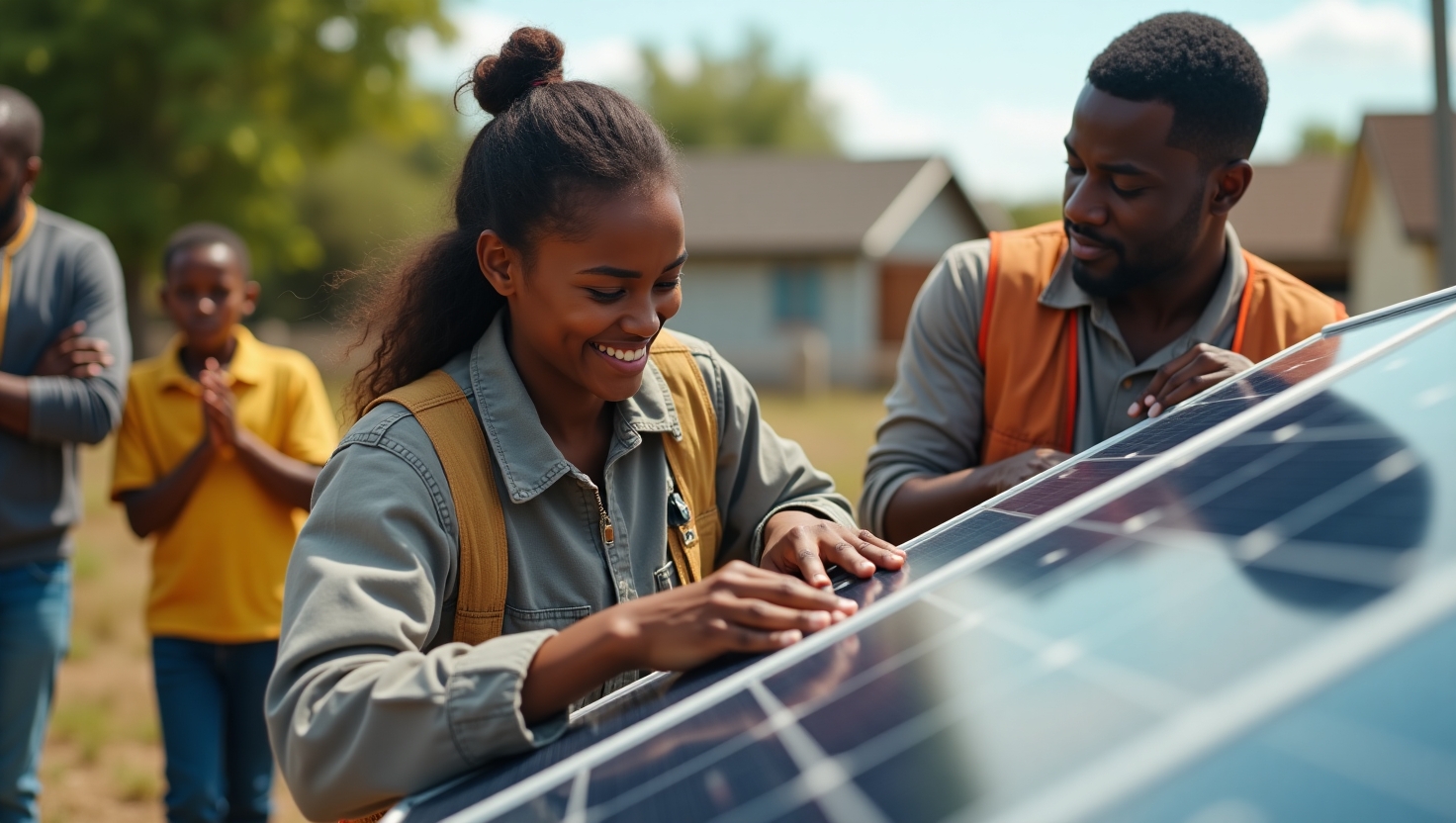Community Energy Revolution: How Collective Solar & Shared Battery Systems Are Democratizing Power
Introduction: Why Your Community Deserves Energy Equity
Imagine sharing solar power costs and storage benefits with neighbors—no upfront fees, maximum resilience. Community Energy emerges as the answer to rising energy costs and grid instability. Events like California wildfires highlight the need for localized resilience. This article explores how collective solar and shared battery systems build energy democratic models for all.
New York’s Solar For All program already reforms community solar to cut low-income bills by 40%. But as shared battery systems expand, think bigger: Imagine one solar farm powering homes + hospitals with uninterrupted flow. That’s the scalable future Community Energy promises—and it’s coming faster than you think. Let’s build it together.
Background: From Isolated Solar to Integrated Community Power
Community Energy defines decentralized, locally-owned energy systems that prioritize equity and resilience. These models solve key barriers like high costs, limited grid access, and infrastructure inequality. They shift power from big utilities to everyday people.
Community solar has proven successful in boosting access. Now, emerging storage solutions extend those gains. As one insight notes, \”While storage, unlike solar PV, is capa…\” implying scalability gaps that collective solar can bridge Solar Power World.
Historically, isolated solar setups left many behind. Integrated community energy changes that. It fosters shared ownership and reduces reliance on unstable grids.
For more on Australian examples, check the Community Power Agency, which promotes similar collective solar initiatives down under.
Trend: Why Storage Is the New Frontier for Community Energy Equity
Storage shifts community energy into high gear. About 70% of U.S. states lack clear policies for shared battery systems, slowing progress. Yet, storage extends solar benefits overnight and boosts resilience during outages.
Featured programs lead the way. The Clean Energy Group pushes front-of-meter storage pooling for broad access. SMUD’s Resiliency Zones offer targeted disaster backup in vulnerable areas.
GMP’s resiliency innovations include predictive outage management. These contrast with behind-the-meter personal systems. Shared models in community energy aggregate resources for greater equity.
What are shared battery systems? They pool energy storage for multiple users, capable of grid support or home backup. How do storage solutions differ by location? Front-of-meter connects to the grid for large-scale use, while behind-the-meter serves individual residences Solar Power World.
In Australia, explore the Australian Renewable Energy Agency (ARENA) for funding shared battery systems in regional communities.
Insight: Hidden Opportunities in Democratizing Storage Access
Aggregation drives affordability and resilience in community energy. Community ownership models overcome cost and infrastructure barriers. This core insight unlocks energy democratic models for underserved groups.
Critical success factors include smart regulatory design. New York’s Solar For All program integrates storage for low-income users. Tech adaptability matters too—tailor solutions for rural versus urban needs.
Avoid pitfalls like subsidy dependence. Uneven geographic rollout can widen gaps. Focus on inclusive collective solar to ensure broad benefits.
Why is community energy equitable? It lowers costs via aggregation and provides disaster resilience. For Australian insights, visit Energy Consumers Australia on equitable energy models.
Forecast: Scaling Community Energy by 2030
Community energy will boom by 2030. Expect 40% growth in cross-state shared battery partnerships by 2027, fueled by Energy Storage Tax Credit expansions. Resilience needs will drive adoption amid extreme weather spikes.
Policy shifts favor democratized ownership. Usage-based credits will replace old caps. The next horizon combines collective solar, storage, and grid services for strong ROIs.
Energy democratic models promise widespread access. Innovations like Energy StorageShares will scale these efforts. Learn more about U.S. trends and cite expansions in storage credits for growth predictions.
In Australia, the Clean Energy Council forecasts similar scaling for community energy projects by 2030.
Call to Action: Start Your Community Energy Project Today
Take immediate steps to join the community energy movement. Join local community solar advocacy groups for hands-on involvement. Explore SMUD or GMP pilot participation guides online.
For the long term, advocate for energy democratic models. Push for policies like GDPR-inspired energy data rights. These build lasting equity.
Bonus: Check the Energy StorageShares platform demo to see shared storage in action. In Australia, start with Community Energy Hubs for local project resources.
